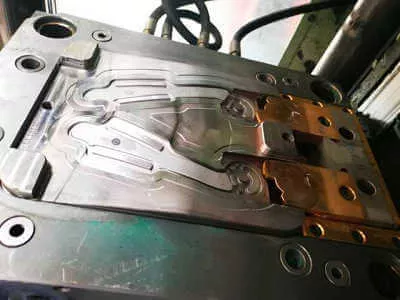Die Casting Mold Design Guideline
- 2021-08-13
In order to be able to think in the same way within SinereTech, and to be able to use dimensions that are suitable for all applications we have created the following guidelines. Those guidelines will be used by the calculation engineers as well as a base for our designers in case of any die casting mold project.
Injection gate and overall layout.
Generally, the injection gate will be placed along the longest side of the part and the injection gate cylinder will be on the closest distance to that side (runner will normally not go around the cavity like a banana).
If sliders are used or if other factors may influence the placement of the injection gate or runner ask the customer what they recommend in each case. Agree with a solution before the mold design. Then the general layout will be suitable for almost all die casting mold.
Distance between the cavity edges and the insert edges.
For normal cases, except for die casting molds with bigger sliders or “deep” parts, use the distance 60-80mm. The upper limit is used for “bigger” parts and the lower limit is for smaller parts.
For die casting tool with bigger sliders the distance can be up to 90-100mm, especially when it concerns the two sides to right and left from the slider side.
For really deep parts the distance may be bigger than 100mm, but then we should ask the customer for advice if suitable the customers die casting machine.
For really small parts the minimum distance of 50mm is used.
The distance for the side towards the injection cylinder is the same as for the other sides, but about 10-15mm on top of that.
In case we would like to optimize this distances. This can preferably be used for this type of die casting tools
Distance between cavities.
Generally, a distance of 60-80mm is used for most cases.
For really small parts the distance of a minimum 45-50mm is used.
For really deep parts the distance is generally bigger than 80mm, but then we should ask the customer for advice if the die casting mold size is fitting to the customer’s machine.
For cases when the runner is between the cavities the distance will be increased with 30-40mm on top of what the distance would have been without the runner (see a, b and c).
Distance between the edge of the insert and the edge of the mold base.
Generally (for normal cases) the rule is to use the same distance as what is used for injection moulding (as long as the part do not require big sliders). That includes bigger parts, deeper parts and parts requiring smaller sliders. That means a distance of 60-90mm is OK for most molds.
For molds with big hydraulic sliders, there is a need to increase the distance with 50-200mm on top of the normal distance (more than what would have been needed for injection moulding). However, for those cases, we should ask the customer for approval. One question is also how asymmetrical the mold can be in case a big slider is only used on the right or left side of the mould.
The thickness of A/B plates and inserts.
The thickness for both the inserts and A/B plates are mainly controlled by the part projected area. As a rule of thumb thicknesses specified in below table will be used when designing die casting molds. The projected areas are specified in cm2. For big projected areas or deep moulds it is recommended to ask the customer for approval. There may be formulas to use in case those dimensions will be optimized
-
TAG:








Send Your Inquiry Now